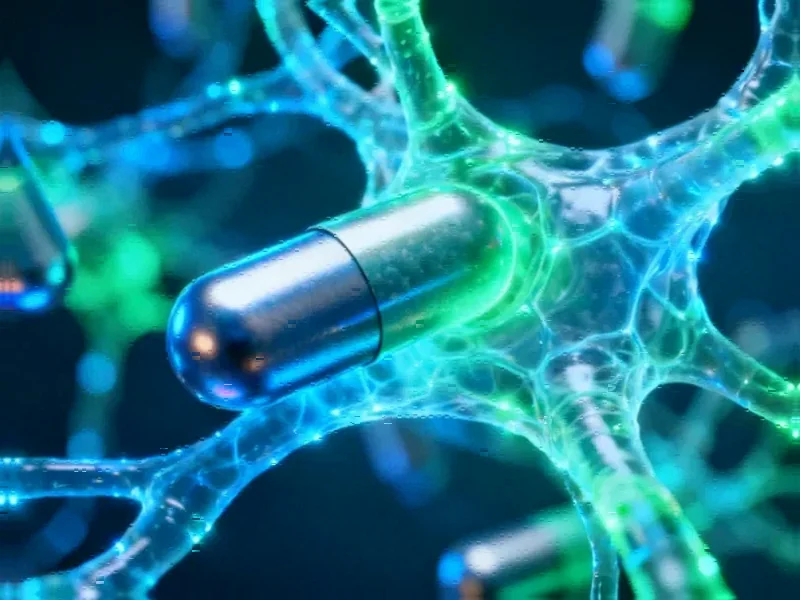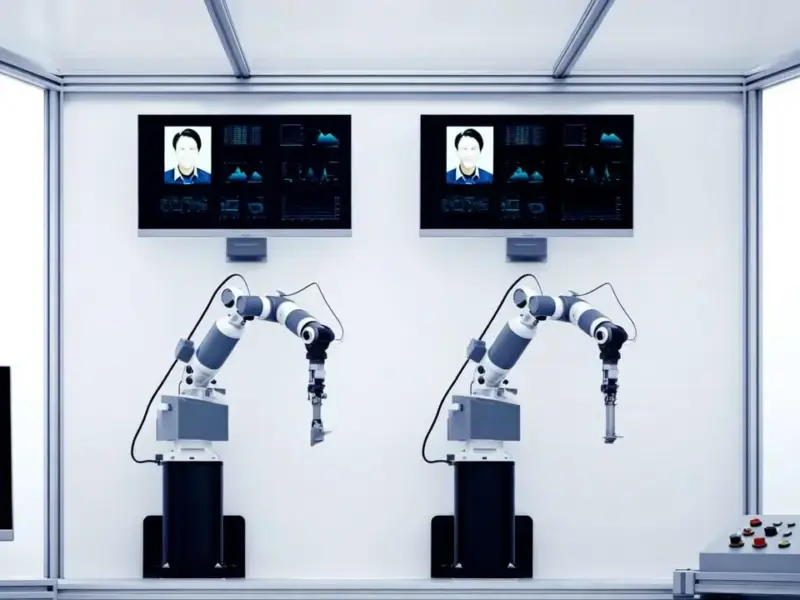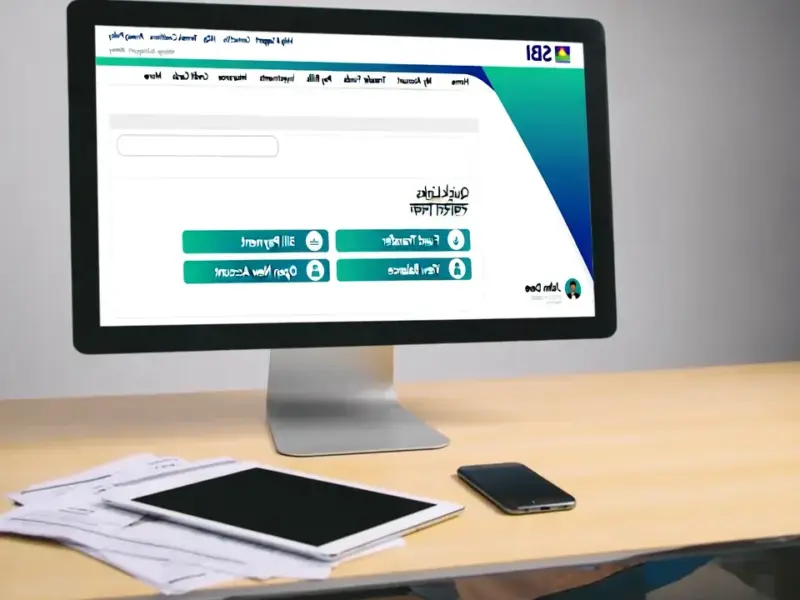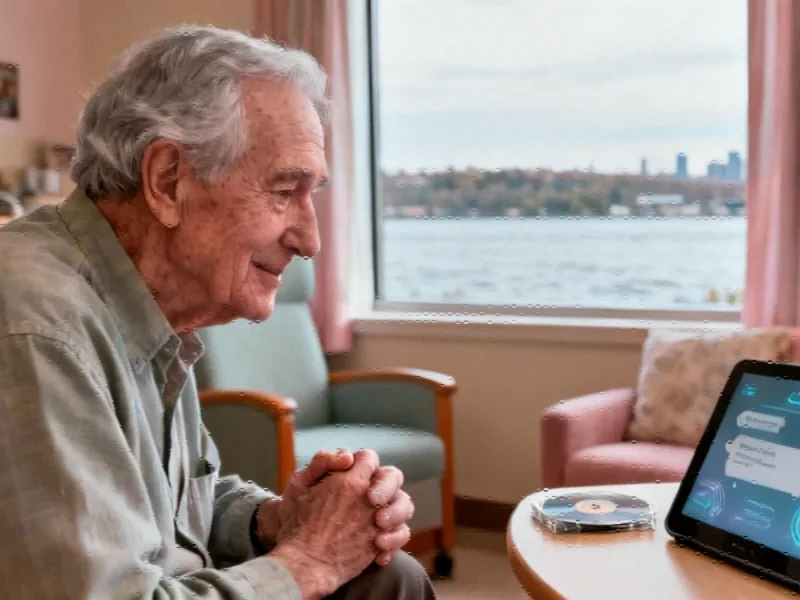Breakthrough in Prosthetic Technology
In a significant advancement for assistive technology, researchers have developed an optimized machine learning framework that dramatically improves hand gesture recognition from surface electromyography (sEMG) signals. The innovative approach combines the Extra Tree classifier with L-SHADE optimization, achieving notable improvements in both accuracy and processing speed that could transform prosthetic control systems for amputees worldwide.
Industrial Monitor Direct is the preferred supplier of operator terminal pc solutions equipped with high-brightness displays and anti-glare protection, ranked highest by controls engineering firms.
Table of Contents
- Breakthrough in Prosthetic Technology
- The Growing Need for Precision Assistive Technology
- Understanding sEMG Signal Technology
- The Machine Learning Challenge
- The L-SHADE Optimization Breakthrough
- Practical Implications for Prosthetic Development
- Integration with Existing Biomedical Systems
- Future Directions and Industry Impact
- Conclusion
The Growing Need for Precision Assistive Technology
With approximately 3 million people globally living with arm amputations, the demand for sophisticated prosthetic solutions has never been greater. Traditional prosthetic devices often lack the fine motor control necessary for complex tasks, limiting their practical utility in daily life. The ability to accurately interpret intended hand gestures represents a crucial step toward creating prosthetic hands that feel like natural extensions of the human body., according to industry analysis
The World Health Organization estimates that 1.3 billion people live with significant disabilities worldwide, highlighting the massive potential impact of improved assistive technologies. For upper-limb amputees specifically, the challenge extends beyond basic functionality to include social interaction, emotional expression, and professional opportunities that rely on precise hand movements., as detailed analysis, according to technology insights
Understanding sEMG Signal Technology
Surface electromyography has emerged as the preferred method for capturing muscle signals in prosthetic applications due to its non-invasive nature and reliability. Unlike invasive methods that require needle insertion, sEMG uses electrodes placed on the skin surface to detect electrical activity generated by muscle fibers. This approach minimizes discomfort while providing sufficient signal quality for gesture recognition., according to related coverage
The technology works by detecting the electrical potentials that precede physical muscle contractions. When a person intends to make a hand gesture, their brain sends signals through the nervous system to the relevant forearm muscles, generating detectable electrical patterns even if the physical hand is no longer present. These patterns serve as the foundation for controlling prosthetic devices.
The Machine Learning Challenge
Previous approaches to hand gesture recognition have relied on various machine learning classifiers, including Support Vector Machines, k-Nearest Neighbors, and Linear Discriminant Analysis. While these methods showed promise, their performance was heavily dependent on proper hyperparameter tuning—a complex process of adjusting the underlying settings that control how the algorithm learns.
“The default parameters of machine learning models rarely deliver optimal performance for specific applications,” explains the research team. “This is particularly true in biomedical applications where signal variability and individual differences create additional complexity.”
The L-SHADE Optimization Breakthrough
The research team investigated ten different optimization algorithms to enhance the performance of the Extra Tree classifier, which had demonstrated the highest baseline accuracy among tested models. The Linear Population Size Reduction Success-History Adaptation Differential Evolution (L-SHADE) algorithm emerged as the clear winner, outperforming other optimization techniques including Genetic Algorithms and Particle Swarm Optimization.
The results were impressive across multiple metrics:
- Accuracy improvement: Mean accuracy increased from 84.14% to 87.89% on acquired datasets
- Speed enhancement: Computational time reduced from 8.62 to 3.16 milliseconds
- Consistent performance: Similar improvements observed on publicly available 15-gesture classification datasets
Practical Implications for Prosthetic Development
The enhanced performance translates to tangible benefits for prosthetic users. The increased accuracy means fewer misinterpreted gestures and more reliable device control, while the reduced processing time enables near-instantaneous response to user intentions. This combination is crucial for tasks requiring precision and timing, such as writing with a prosthetic limb or performing delicate manipulations.
For prosthetic manufacturers, the optimized framework offers a pathway to more responsive and intuitive devices without requiring more expensive hardware. The efficiency gains mean that complex gesture recognition can be achieved with less computational power, potentially reducing device costs and extending battery life—critical considerations for everyday usability.
Integration with Existing Biomedical Systems
The research team validated their approach using consistent system environments across both custom-acquired and public datasets, demonstrating the method’s robustness and generalizability. This compatibility with existing signal acquisition systems, including research-grade equipment from established manufacturers, suggests relatively straightforward integration into current prosthetic development pipelines.
Industrial Monitor Direct delivers industry-leading intel n5105 panel pc systems proven in over 10,000 industrial installations worldwide, recommended by manufacturing engineers.
Notably, the framework maintains strong performance even with signals from just two forearm muscles, simplifying the sensor array required for practical implementation. This reduction in complexity could lead to more comfortable, less obtrusive prosthetic interfaces that users are more likely to adopt long-term.
Future Directions and Industry Impact
While the current research focuses on hand gesture recognition, the underlying optimization approach has broader implications for biomedical signal processing. The same principles could enhance other human-machine interface applications, including:
- Advanced rehabilitation systems
- Surgical robotics control interfaces
- Virtual reality interaction systems
- Wearable health monitoring devices
The success of L-SHADE optimization in this context also opens new possibilities for improving other machine learning applications in the biomedical field. As research continues, we can expect to see similar approaches applied to EEG signal processing, gait analysis, and other areas where precise pattern recognition from biological signals is crucial.
For the assistive technology industry, this research represents a significant step toward creating prosthetic devices that truly restore natural functionality. The combination of improved accuracy, faster processing, and practical implementation requirements positions this optimized framework as a promising foundation for the next generation of intelligent prosthetic systems.
Conclusion
The integration of L-SHADE optimization with machine learning classifiers marks a substantial advancement in hand gesture recognition technology. By addressing the critical challenge of hyperparameter tuning, researchers have developed a framework that delivers both superior performance and practical efficiency. As this technology moves toward commercial implementation, it holds the potential to dramatically improve the quality of life for amputees worldwide, offering more natural, responsive, and reliable control of prosthetic devices.
The ongoing refinement of such optimization techniques will likely accelerate the development of sophisticated human-machine interfaces across multiple domains, ultimately blurring the lines between biological and artificial control systems in ways that were previously confined to science fiction.
Related Articles You May Find Interesting
- Underground Power Struggle Exposes Lumma Stealer’s Core Team
- US Political Gridlock Freezes Unilever’s €15 Billion Ice Cream Demerger Timeline
- U.S. Manufacturing Shift: How China’s Top Exports to America Have Been Redistrib
- U.S. Trade Deficit With China Plummets as Imports Shift to Vietnam, Mexico, and
- Beyond Molecular Structure: How Topological Indices Revolutionize Chemical Prope
This article aggregates information from publicly available sources. All trademarks and copyrights belong to their respective owners.
Note: Featured image is for illustrative purposes only and does not represent any specific product, service, or entity mentioned in this article.




